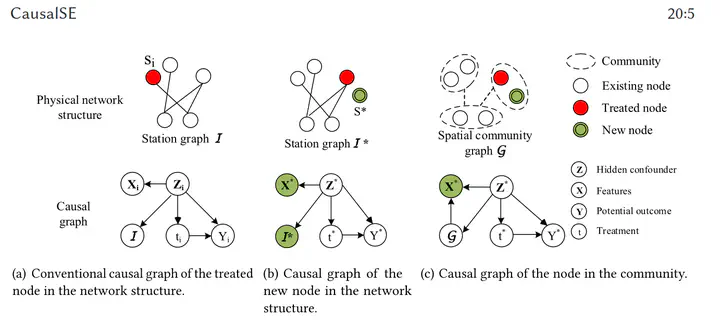
Abstract
To meet the growing bike-sharing demands and make people’s travel convenient, the companies need to add new stations at locations where demands exceed supply. Before making reliable decisions on adding new stations, it is required to understand the spatial effects of new stations on the station network. In this article,, we study the deployment of the new station by estimating its varied causal effects on the demands of nearby stations, e.g., how does adding a new station (treatment) causally influence the demands (outcome) of nearby stations? When working with observational data, we should control hidden confounders, which cause spurious relations between treatments and outcomes. However, previous studies use historical data of the individual unit (e.g., the station’s historical demands) to approximate its hidden confounders, which cannot deal with the lack of historical data for new stations. And the conventional methods overlook the differences between units, which cannot be applied to our problem. To overcome the challenges, we propose a novel model (CausalSE) to estimate the varied effects of new stations on nearby stations, which uses the shared knowledge (i.e., similar traveling patterns among stations) to approximate hidden confounders. Experimental results on real-world datasets show that CausalSE outperforms six state-of-the-art methods.